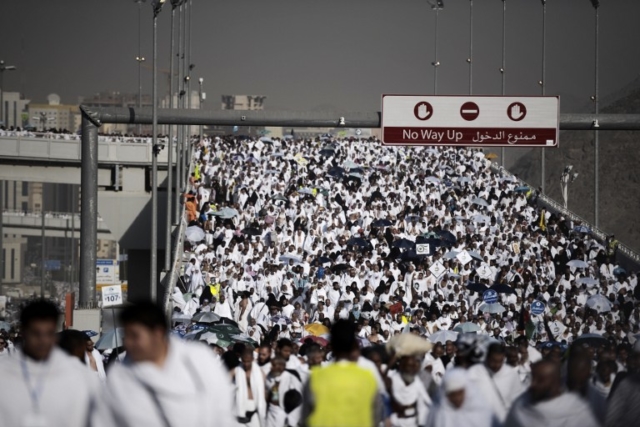More than 1.4 million people have traveled to Mecca for the Hajj. Among the pilgrims are members of the traditionally fierce rivals, the Sunni and Shia communities. Even beneath the blazing sun, it’s difficult to find anyone losing their cool. CCTV America’s Adel El Mahrouky reports.

The rivalry between Sunni and Shia Muslims is at the heart of many Muslim conflicts. It’s a rivalry that dates back centuries. On the Hajj, however, there’s no distinction made. When the rituals begin, everyone is dressed in two sheets of white cloth that reflect equality.
Telling people apart is tricky. Identifying a person’s homeland is also a problem. Many in Saudi Arabia blame politics for corrupting relations between the Sunni and Shia, who on Hajj can see no difference between one another.
One of the rules in Arafa is that pilgrims must avoid arguments, or even debate. Most people tend to ignore any political talk. Instead, they concentrate on how the pilgrimage can bring so many people together.
 CGTN America
CGTN America
 Muslim pilgrims arrive to throw pebbles at pillars during the “Jamarat” ritual, the stoning of Satan, in Mina near the holy city of Mecca, on October 4, 2014. Pilgrims pelt pillars symbolizing the devil with pebbles to show their defiance on the third day of the hajj as Muslims worldwide mark the Eid al-Adha or the Feast of the Sacrifice, marking the end of the hajj pilgrimage to Mecca and commemorating Abraham’s willingness to sacrifice his son Ismail on God’s command in the holy city of Mecca. AFP PHOTO/MOHAMMED AL-SHAIKH
Muslim pilgrims arrive to throw pebbles at pillars during the “Jamarat” ritual, the stoning of Satan, in Mina near the holy city of Mecca, on October 4, 2014. Pilgrims pelt pillars symbolizing the devil with pebbles to show their defiance on the third day of the hajj as Muslims worldwide mark the Eid al-Adha or the Feast of the Sacrifice, marking the end of the hajj pilgrimage to Mecca and commemorating Abraham’s willingness to sacrifice his son Ismail on God’s command in the holy city of Mecca. AFP PHOTO/MOHAMMED AL-SHAIKH
